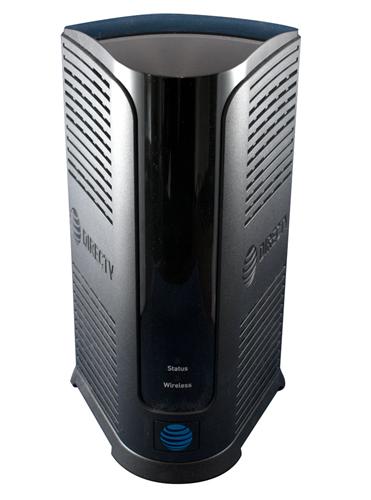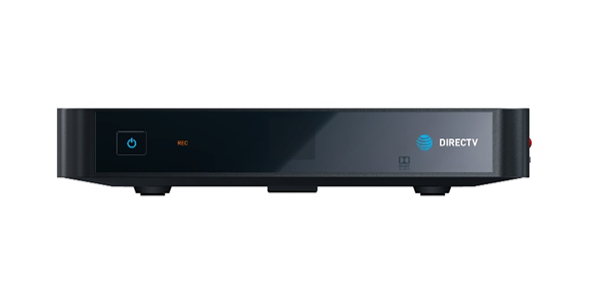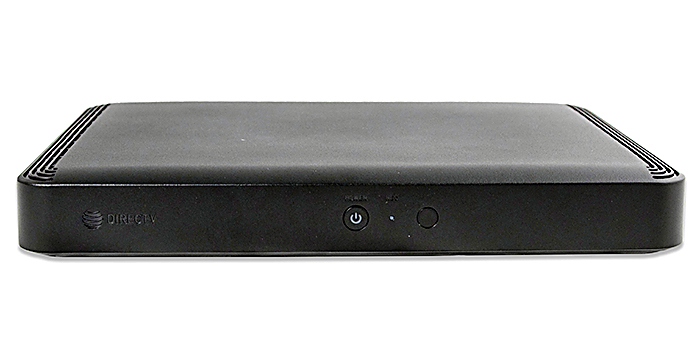There’s a good chance that if you have DIRECTV, somewhere in your house is something like the picture above. It may be grey or black, it may have a sticker on it telling you never to unplug it. Either way, it’s the same. It supplies power to your satellite dish and (if you have one) your external multiswitch. And really, when they say “never unplug it,” they mean it. If you unplug it you lose satellite service. Period. Service comes back in a minute or two after you plug it back in, but for those few minutes, you’ll be in the doghouse.
If you are panicking right now because you have never seen one of these before, don’t worry. As long as your satellite TV works, that’s all that’s important. There are three different DIRECTV boxes that supply their own power to the dish and if you have any of them you don’t need the grey box. If you don’t, and your satellite TV works, chances are you have a power inserter (that’s what they call it) but you don’t know where it is. Either that, or you have a very very old satellite system. But that’s a story for another article.
The question comes up over and over again about where the power inserter needs to go in relation to the dish or external multiswitch. The answer is, it can be as little as 6 cable-feet away but shouldn’t be more than about 50 cable-feet away.
It’s a foot of cable. So, like if you are only physically 25 feet from the dish but for some reason you’ve run 100 feet of cable and it’s just sitting there in a pile before your power inserter, chances are that wouldn’t work.
Most people don’t have a problem getting a 6-foot cable run between their dish or multiswitch and the power inserter. Commercial installers who want to put everything in one closet might, though. The power inserter is designed with a little extra voltage to compensate for long runs, but that means that if you put it too close it might supply too much voltage. This will make the electronics run even hotter than they do and it means they won’t last as long.
If you need to put the power inserter physically closer, run six feet of cable and keep it looped before the power inserter. Simple as that.
If your power inserter is more than 50 feet from the dish and things still work, don’t panic. If the dish wasn’t getting enough voltage it would tell you either by popping up an error or by occasionally not working. The distance limitation is based on the average amount of voltage lost per foot and while the 6-foot thing is really firm, the 150-foot thing is pretty flexible as long as you can confirm that you are getting at least 19 volts at the dish. A cheap multimeter will help you confirm this. If you get less than 19 volts, it becomes impossible for the dish to know which satellite it’s pointed at.

HS17 Genie 2

H44 Genie Lite

HR54 Genie 1
I mentioned three devices that power the dish without the need for a power inserter. The same distance limitations apply to them, of course. They are models H44, HR54, and HS17. The model number can be found on a green sticker somewhere on the receiver itself. I’ve included pictures above (click on the image to see it larger) but I do understand that a lot of the DIRECTV equipment looks pretty much the same. The green sticker is the best way to know for sure.
If you’re looking for new DIRECTV equipment, need to activate a new receiver, internet service, or cell service account, or if you just need some tech support, call us! We’re here for you during East Coast business hours at 888-233-7563. We have experts on the line who will help you for free! Call, or if it’s after hours just fill out the form below. We’ll get right back to you!
The post How far should the DIRECTV power inserter be from the dish or SWM? appeared first on The Solid Signal Blog.
Continue reading...
What if you don’t think you have one of these?
If you are panicking right now because you have never seen one of these before, don’t worry. As long as your satellite TV works, that’s all that’s important. There are three different DIRECTV boxes that supply their own power to the dish and if you have any of them you don’t need the grey box. If you don’t, and your satellite TV works, chances are you have a power inserter (that’s what they call it) but you don’t know where it is. Either that, or you have a very very old satellite system. But that’s a story for another article.
The question comes up over and over again about where the power inserter needs to go in relation to the dish or external multiswitch. The answer is, it can be as little as 6 cable-feet away but shouldn’t be more than about 50 cable-feet away.
What’s a cable-foot?
It’s a foot of cable. So, like if you are only physically 25 feet from the dish but for some reason you’ve run 100 feet of cable and it’s just sitting there in a pile before your power inserter, chances are that wouldn’t work.
Why 6 feet?
Most people don’t have a problem getting a 6-foot cable run between their dish or multiswitch and the power inserter. Commercial installers who want to put everything in one closet might, though. The power inserter is designed with a little extra voltage to compensate for long runs, but that means that if you put it too close it might supply too much voltage. This will make the electronics run even hotter than they do and it means they won’t last as long.
If you need to put the power inserter physically closer, run six feet of cable and keep it looped before the power inserter. Simple as that.
If your power inserter is more than 50 feet from the dish and things still work, don’t panic. If the dish wasn’t getting enough voltage it would tell you either by popping up an error or by occasionally not working. The distance limitation is based on the average amount of voltage lost per foot and while the 6-foot thing is really firm, the 150-foot thing is pretty flexible as long as you can confirm that you are getting at least 19 volts at the dish. A cheap multimeter will help you confirm this. If you get less than 19 volts, it becomes impossible for the dish to know which satellite it’s pointed at.
The three devices that don’t need a power inserter

HS17 Genie 2

H44 Genie Lite

HR54 Genie 1
I mentioned three devices that power the dish without the need for a power inserter. The same distance limitations apply to them, of course. They are models H44, HR54, and HS17. The model number can be found on a green sticker somewhere on the receiver itself. I’ve included pictures above (click on the image to see it larger) but I do understand that a lot of the DIRECTV equipment looks pretty much the same. The green sticker is the best way to know for sure.
If you’re looking for new DIRECTV equipment, need to activate a new receiver, internet service, or cell service account, or if you just need some tech support, call us! We’re here for you during East Coast business hours at 888-233-7563. We have experts on the line who will help you for free! Call, or if it’s after hours just fill out the form below. We’ll get right back to you!
The post How far should the DIRECTV power inserter be from the dish or SWM? appeared first on The Solid Signal Blog.
Continue reading...

